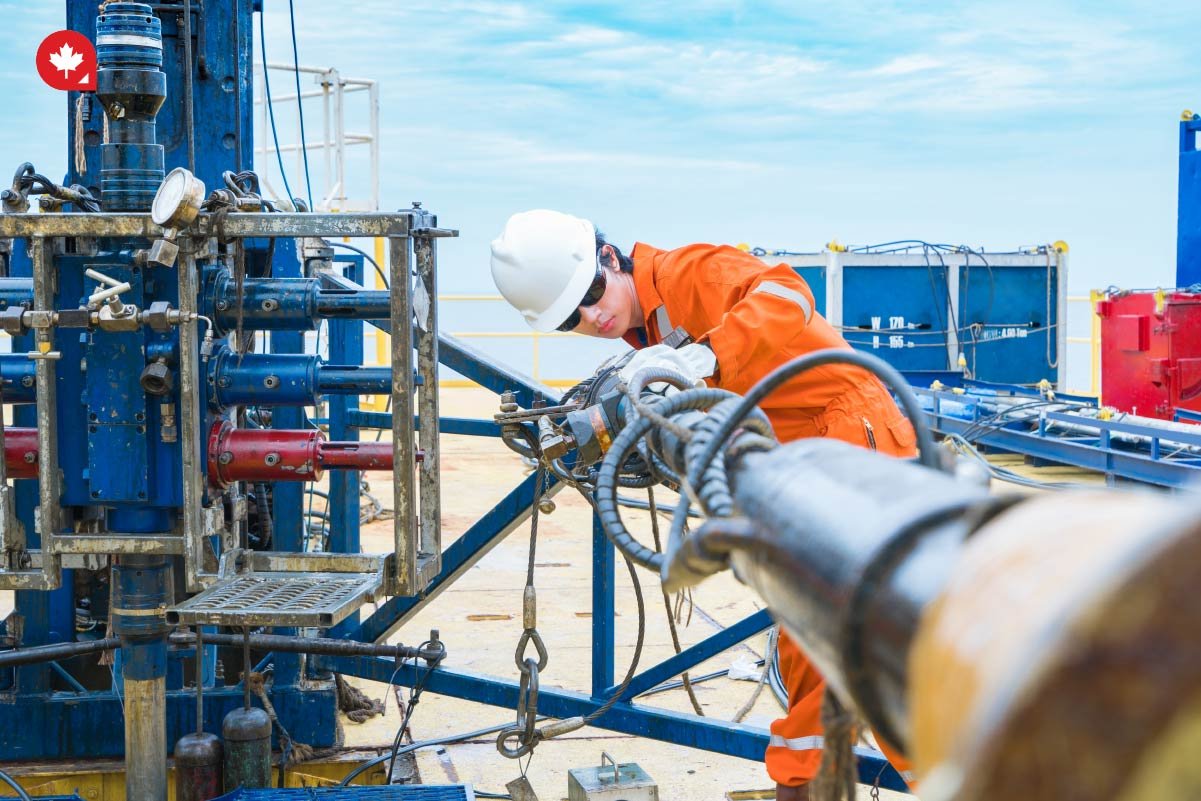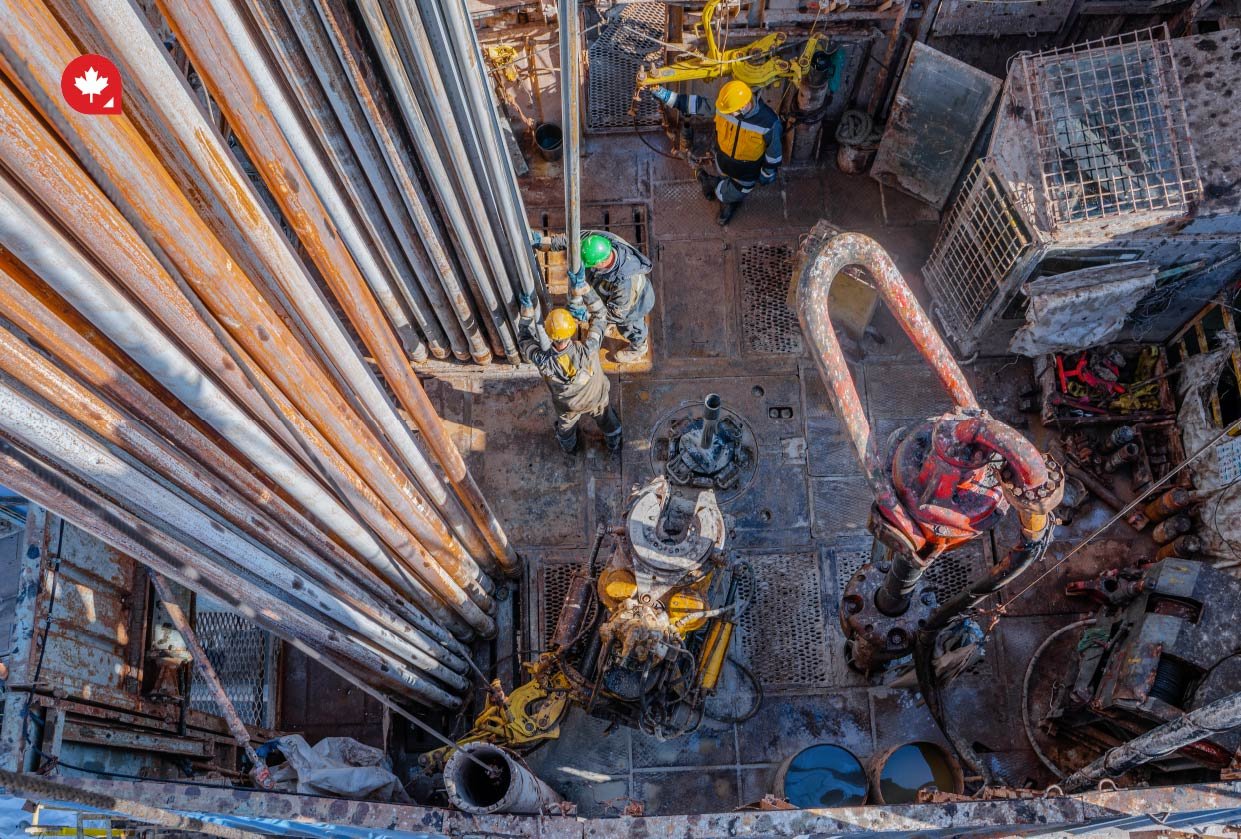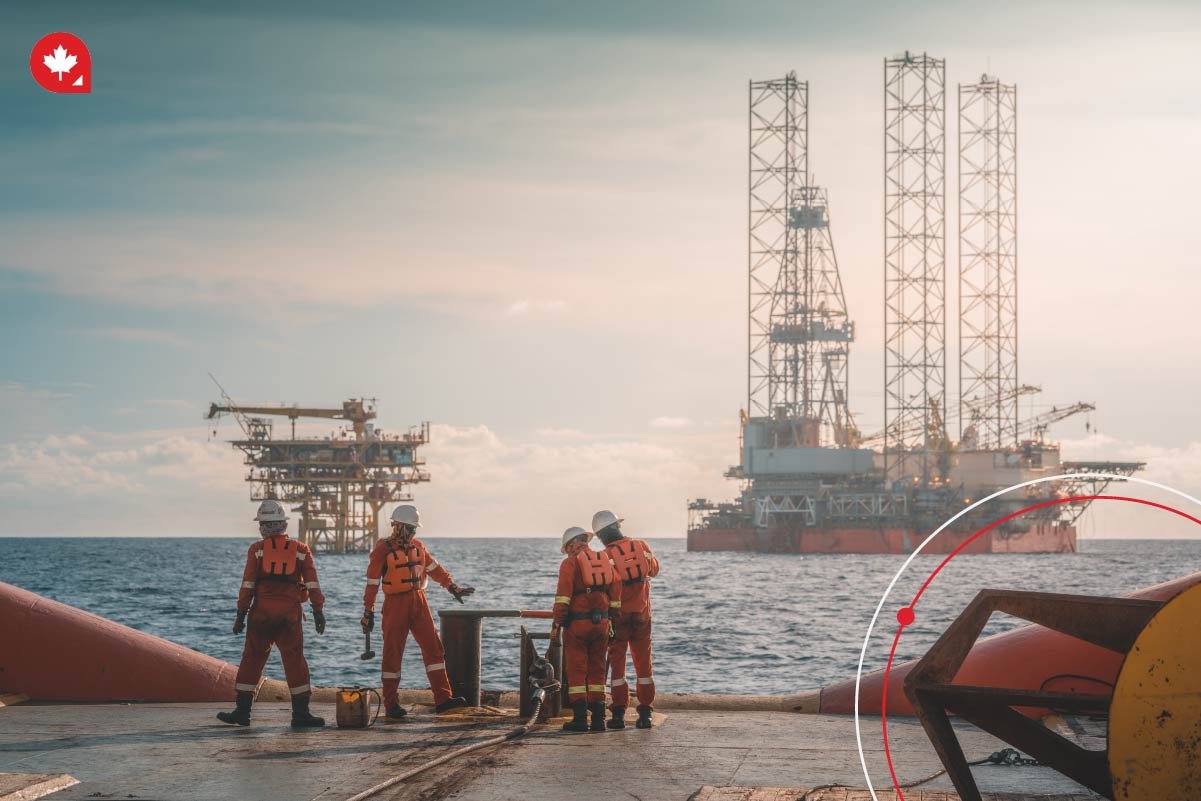Canada's oil and gas industry is one of the largest employers in the country, and there is a growing demand for skilled workers in this field. As an oil and gas rig drilling worker, your main job is to operate and maintain drilling equipment used to extract oil and gas from the ground.
Canada has numerous job prospects in the oil and gas industry, particularly in Alberta, British Columbia, and Saskatchewan. These provinces have a high demand for skilled workers in the oil and gas industry due to their abundant natural resources.
According to Talent.com, The average driller salary in Canada is 58,500 CAD per year or 30 CAD per hour. Entry-level positions start at 44,850 CAD annually, while most experienced workers make up to 80,161 CAD annually. On the other hand, the average oil and gas salary in Canada is 68,250 CAD per year or 35 CAD per hour. Entry-level positions start at 47,775 CAD annually, while most experienced workers make up to 122,835 CAD annually. These high salaries make Canada an attractive destination for oil and gas workers looking to immigrate to a country that offers great job opportunities and excellent compensation.
Immigration Routes to Canada For Oil and Gas Rig Drilling Workers

If you are an oil and gas rig drilling worker looking to immigrate to Canada, there are several immigration routes that you can take. This section will discuss the three main immigration routes for oil and gas workers: Express Entry, Provincial Nominee Program (PNP), and job offer through the Temporary Foreign Workers Permit.
Express Entry:
Express Entry is an online system used by the Canadian government to manage applications for permanent residence from skilled workers. To be eligible for Express Entry, you must meet the minimum requirements, which include:
- Being skilled in a particular occupation
- Meeting the language requirements (English or French)
- Having at least one year of work experience in your skilled occupation
- Meeting the minimum requirements for education
If you meet the eligibility requirements, you can create an Express Entry profile and submit an Expression of Interest (EOI). You will be assessed based on a Comprehensive Ranking System (CRS) score based on factors such as age, education, work experience, and language proficiency. The highest-ranked candidates will be invited to apply for permanent residence. Check your CRS scores with our CRS calculator here.
The best way to immigrate to Canada as a oil or gas rig worker is through the Federal Skilled Trades Progam.
Provincial Nominee Program (PNP):
The Provincial Nominee Program (PNP) is another immigration route that oil and gas rig drilling workers can take. The PNP is designed to help Canadian provinces and territories meet their specific economic and labor market needs. Each province and territory has its own PNP with different eligibility requirements and application processes.
To be eligible for a PNP, you must have a job offer from a Canadian employer in your skilled occupation. You must also meet the specific eligibility requirements of the province or territory where you want to live and work. If a province or territory nominates you, you will receive an invitation to apply for permanent residence.
Job Offer:
If you have a job offer from a Canadian employer in your skilled occupation, you may be eligible to apply for a work permit. A work permit will allow you to work in Canada temporarily through the Temporary Foreign Workers Permit (TFWP) If you want to stay in Canada permanently, you will need to apply for permanent residence through one of the immigration programs, such as Express Entry or the PNP.
Steps to Follow to Apply for Express Entry and Immigrate as an Oil and Gas Rig Worker
As with anything, following a step-by-step tried and tested process is typically the best way to get things done. By following these four steps, it can uncomplicate the whole immigration process.
1. Choose a province or territory
Oil and gas rigs are mostly operated in North Western Canada. Alberta, Saskatchewan, British Columbia, and Newfoundland & Labrador are the provinces that lead the way in oil and gas extraction. Once you know where you want to work, you can secure a job offer and possibly apply for a Provincial Nomination.
2. Confirm your eligibility
To immigrate to Canada, you must be admissible. Confirming your eligibility will also require you to provide important information that will be used to determine the next step.
3. Choose an immigration program
Canada has over 100 immigration pathways. Applying through the right one could mean the difference between obtaining permanent residence in a matter of months and saving a significant amount of money over having to reapply, pay processing fees again and waiting even longer for that permanent residence certificate. It’s an unnecessary headache you just don’t need.
The four most popular immigration programs are:
- Express Entry system;
- Provincial Nomination Program;
- Rural and Northern Immigration Pilot;
- The Atlantic Immigration Pilot.
Each program has their own set of requirements, forms and processing times.
4. Submit Your Applications
Aside from your permanent residency application, you will need to apply for a temporary foreign work permit. As you work in Canada, you will also become eligible for more immigration streams, such as the Canadian Experience Class, an immigration stream within the Express Entry Program. When your permanent residency application is submitted, you want to be sure it is complete and filled in correctly the first time, as applications can be rejected for the smallest of reasons.
Finding a Job in Canada as an Oil and Gas Rig Drilling Worker

These are just a few examples of the many job titles that fall under the Oil and Gas Drilling Servicing Labourer NOC code in Canada. Each job may have different responsibilities and requirements, but they all play a crucial role in the oil and gas industry. As an oil and gas worker, you may work on drilling rigs, perform maintenance on equipment, or assist in the exploration and extraction of oil and gas resources. Regardless of the specific job title, working in the oil and gas industry requires physical strength, technical skills, and a commitment to safety.
- Floor hand – offshore drilling rig
- Floor hand – oil and gas drilling
- Floorhand – service rig
- Floorman/woman – offshore drilling rig
- Floorman/woman – oil and gas drilling
- Gravity prospecting observer helper
- Leasehand
- Leasehand – oil and gas drilling
- Observer helper – gravity prospecting
- Observer helper – seismic prospecting
- Oil field laborer
- Oil well cementer helper
- Perforator helper – oil field services
- Perforator loader helper – oil field services
- Reeled tubing helper – oil field services
- Roughneck
- Roughneck – offshore drilling rig
- Roustabout – oil and gas drilling
- Seismic GPS rover
- Seismic line cutter
- Shakerhand
- Shakerhand – oil and gas drilling
- Shooter – seismograph
- Shooter helper – seismic prospecting
- Slasher – oil, and gas
- Slasher – oil field services
- Swamper – oil, and gas
- Swamper – oil field services
- Tubing helper – oil field services
Find out Where to Find the Best Oil and Gas Jobs in Canada here.
If you're interested in pursuing a career in the oil and gas industry, it's important to know where to start. Two key locations in Canada are Nisku, Alberta (near Edmonton) and Calgary. But before you start your job search, it's important to make sure you're physically and mentally prepared for the demands of the job.
One of the most important requirements for oil and gas jobs is safety training. You'll need to obtain several safety tickets, including CSTS/PST, H2S Alive, Standard First Aid, and Ground Disturbance Level 1. These can typically be obtained through one-day online courses, but they're crucial for ensuring the safety of yourself and your coworkers.
Physical fitness is also a key requirement for many oil and gas jobs. You'll need to be able to lift heavy objects repeatedly throughout your shift, and you'll need to be able to work outdoors in all weather conditions. Mechanical aptitude is also important, as many oil and gas jobs require hands-on work with equipment.
If you're interested in jobs that require driving, you'll need a Class 5 (ordinary) Non-GDL driver's license and an acceptable driver's abstract. However, there are also jobs available that don't require a driver's license.
It's worth noting that there are many different types of jobs in the oil and gas industry, not just drilling jobs. The Oil Field Service industry, for example, is at least as large as the Drilling Industry and provides services to the rigs during or after drilling. Before drilling even begins, there's also the Seismic Survey and Prospecting Industry that employs on-the-ground workers.
Getting started in the oil and gas industry can be challenging, but with the right training, skills, and mindset, it can be a rewarding and fulfilling career path. So if you're up for the challenge, start by getting your safety tickets and building up your physical fitness, and then begin your job search where oil and gas jobs are in high demand.
FAQs
What are the Job Prospects like for Oil and Gas Rig Drilling Workers in Canada?
The job prospects for oil and gas rig drilling workers in Canada are currently moderate. The oil and gas industry is an important part of the Canadian economy, and there is a consistent demand for skilled workers in this sector. However, like any industry, the demand can fluctuate depending on various factors such as oil prices, government policies, and technological advancements.
What are the Requirements for Immigrating to Canada as an Oil and Gas Rig Drilling Worker?
To immigrate to Canada as an oil and gas rig drilling worker, you must meet the eligibility criteria for the Federal Skilled Trades Program (FSTP). This program is designed for skilled tradespeople who want to become permanent residents of Canada. To be eligible, you must have at least two years of full-time work experience in a skilled trade, including oil and gas rig drilling. You must also meet language requirements, provide proof of funds, and undergo a medical examination.
What are the Living and Working Conditions like for Oil and Gas Rig Drilling Workers in Canada?
The living and working conditions for oil and gas rig drilling workers in Canada can vary depending on the location and employer. In remote locations, workers may live in camps and work long hours in challenging weather conditions. However, they are often compensated with higher salaries and benefits. In urban areas, workers may work regular hours and have access to more amenities. Overall, working in the oil and gas industry can be demanding, but it can also be rewarding for those who enjoy a challenging work environment.




